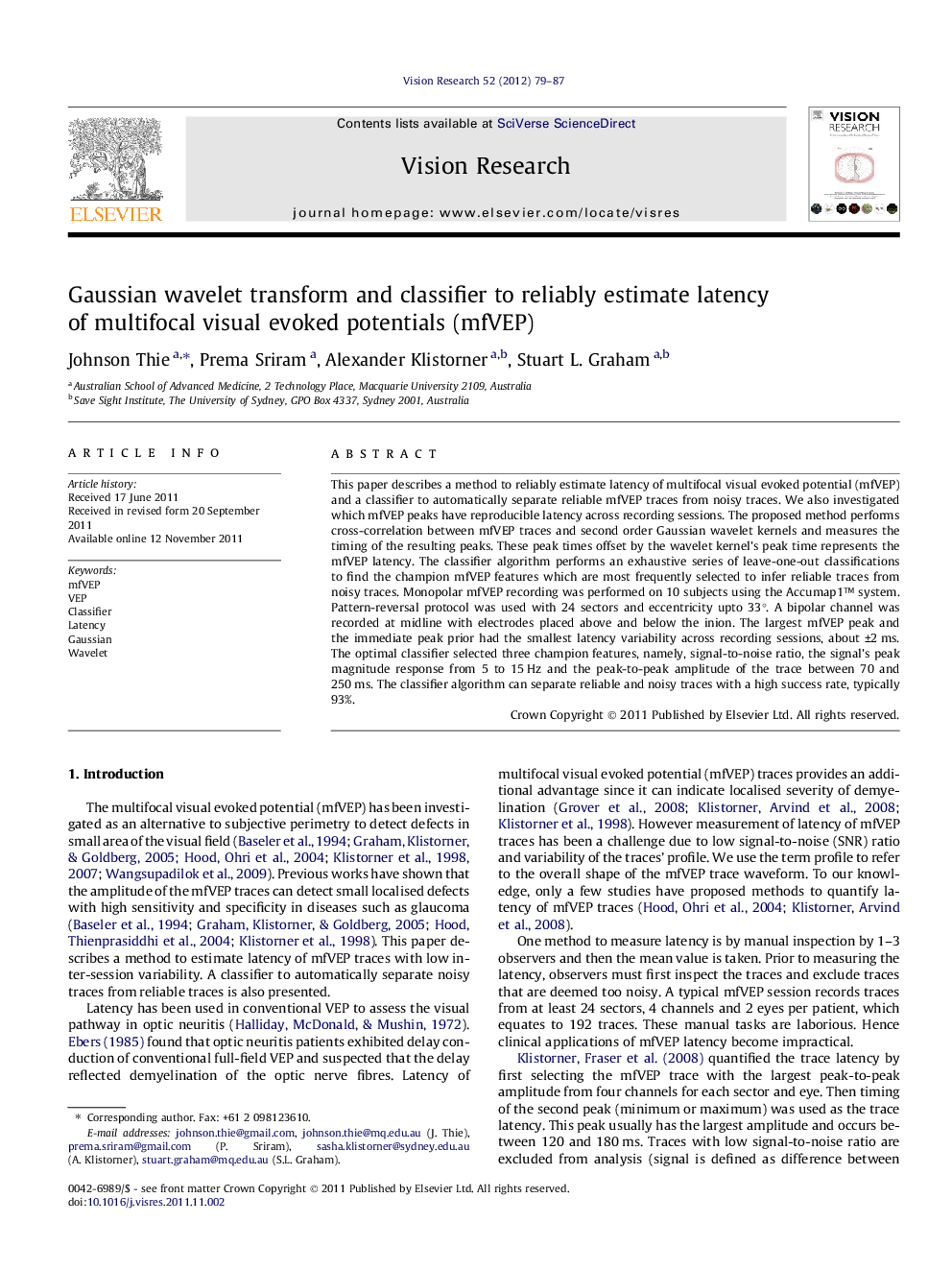| Article ID | Journal | Published Year | Pages | File Type |
|---|---|---|---|---|
| 4034091 | Vision Research | 2012 | 9 Pages |
This paper describes a method to reliably estimate latency of multifocal visual evoked potential (mfVEP) and a classifier to automatically separate reliable mfVEP traces from noisy traces. We also investigated which mfVEP peaks have reproducible latency across recording sessions. The proposed method performs cross-correlation between mfVEP traces and second order Gaussian wavelet kernels and measures the timing of the resulting peaks. These peak times offset by the wavelet kernel’s peak time represents the mfVEP latency. The classifier algorithm performs an exhaustive series of leave-one-out classifications to find the champion mfVEP features which are most frequently selected to infer reliable traces from noisy traces. Monopolar mfVEP recording was performed on 10 subjects using the Accumap1™ system. Pattern-reversal protocol was used with 24 sectors and eccentricity upto 33°. A bipolar channel was recorded at midline with electrodes placed above and below the inion. The largest mfVEP peak and the immediate peak prior had the smallest latency variability across recording sessions, about ±2 ms. The optimal classifier selected three champion features, namely, signal-to-noise ratio, the signal’s peak magnitude response from 5 to 15 Hz and the peak-to-peak amplitude of the trace between 70 and 250 ms. The classifier algorithm can separate reliable and noisy traces with a high success rate, typically 93%.
